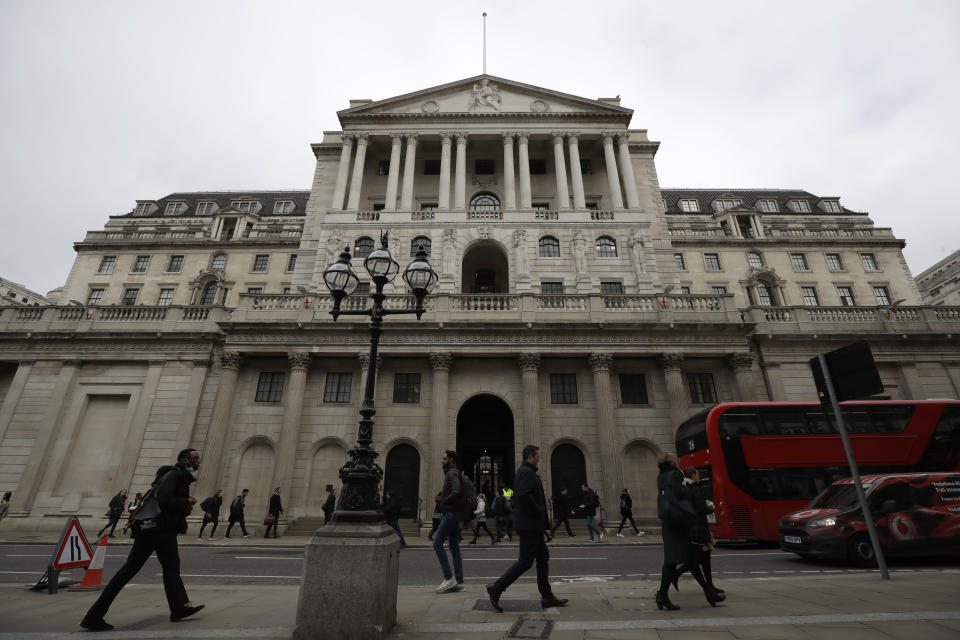Bank of England told to 'put its money where its mouth is' on climate change

Campaigners have called for the Bank of England to do more to address its climate footprint, after the bank’s own figures showed it is financing dangerous levels of pollution.
The Bank of England on Thursday published analysis of its own carbon footprint, the first time it has disclosed environmental metrics.
The emissions from its own activities — everything from printing bank notes to business travel — have fallen by 33% since 2016, exceeding its target of a 20% reduction.
Read more: New Bank of England chief told: Make climate change top priority
However, the Bank of England continues to finance activities not aligned with the Paris climate goals. The central bank has invested over half a trillion pounds into the UK economy through quantitative easing (QE) and this money has gone towards activities that emit dangerously high levels of CO2.
The central bank’s current investment portfolio is on a path to contribute to an average global temperature increase of 3.5°C by the end of the century — well above the 2°C warming limit agreed by world leaders at the 2015 UN Paris climate summit.
Warming at 3.5°C would lead to rising sea levels, droughts, and the loss of large amounts of animal and plant life.
Read more: Tackle 'Titanic' climate challenge before it's too late, leaders told
Fran Boait, executive director of Positive Money, said it was “disappointing” the Bank of England was using “newly created public money [to] support companies who are driving us towards irreversible climate breakdown.
“The Bank of England’s own balance sheet is supporting 3.5°C warming through corporate QE — more than double the 1.5°C safe upper-limit,” Boait said.
“Our central bank now needs to put its money where its mouth is and ensure its QE programme is supporting the government’s climate commitments through the Paris Agreement, rather than hindering it. At a minimum this means no more buying bonds from the likes of climate criminals such as Shell and BP.”
Read more: Bank of England’s Carney says climate no longer 'niche' issue for investors
The Bank of England does not disclose what corporate bonds it holds through QE, however corporate debt accounts for just 2% of the QE portfolio.
The vast majority is UK government debt. Emissions reflect the carbon footprint of the UK economy as a whole.
“There remains a gap between the associated carbon outputs of these holdings and the Paris goals,” Bank of England governor Andrew Bailey wrote in the forward to the report. “This demonstrates the additional work needed to meet the UK’s goal of net-zero emissions by 2050.
“We have learned much from this process and as our understanding of climate risks continues to improve, we will go further, enhancing our metrics and updating our approach by the time of our next report.”
The Bank set a new target to cut its direct emissions by 63% over the next 10 years and said it would deliver updates on its climate footprint annually.

 Yahoo Finance
Yahoo Finance 